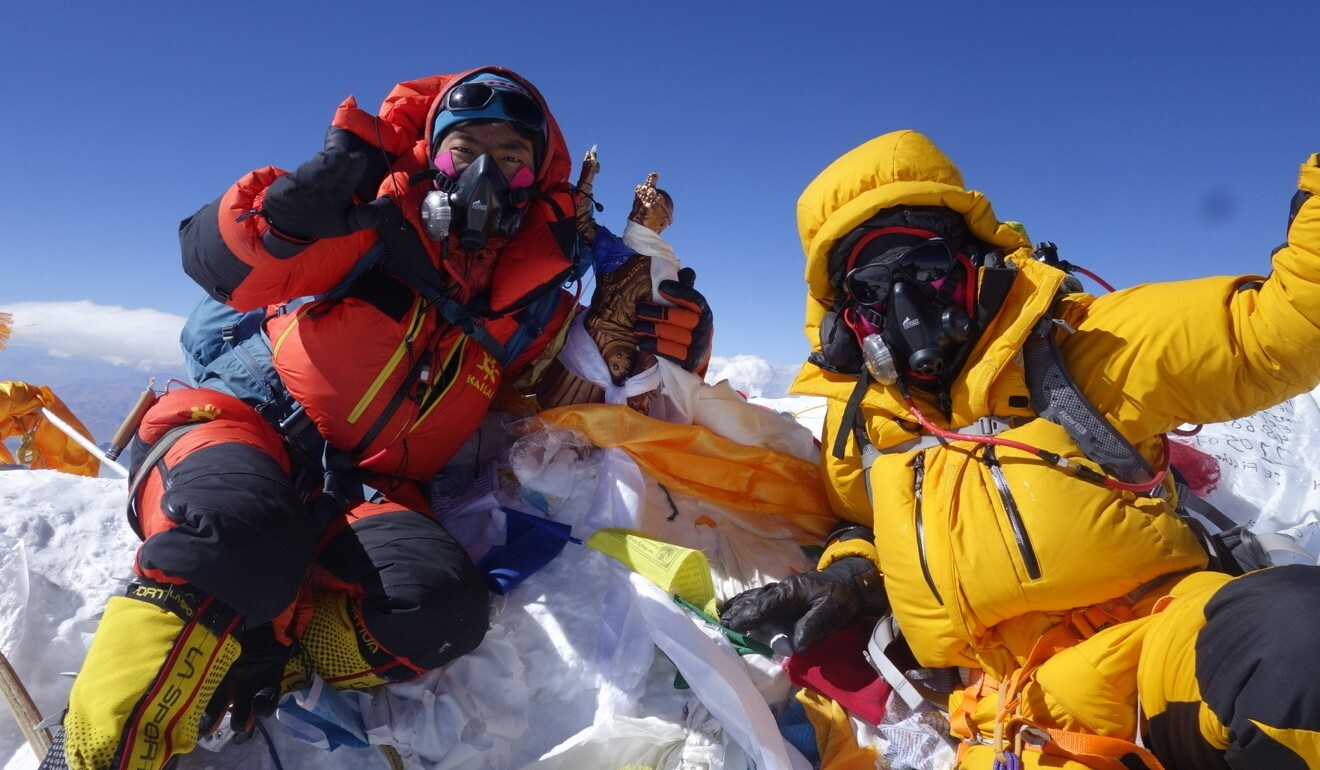
How Hongkonger Ada Tsang beat setbacks, tragedy and failure to conquer Everest in record time
- Nepal’s surge in Covid-19 cases keeps fastest woman climber in Kathmandu, unable to come home
- At the top of world’s highest mountain, climber thought of mum who always supported her dreams
Ada Tsang Yin-hung is accustomed to failure. The 44-year-old mountaineer recently became the fastest woman in the world to conquer Mount Everest, but her journey to the top has been anything but smooth.
She was just 100 metres from the summit on May 12 when wind conditions changed suddenly and became so strong, she said it felt like “double the speed of a Typhoon Eight”, referring to one of Hong Kong’s higher tiers in a warning system for storms.
“It was so scary,” Tsang told the Post in a Zoom interview from her hotel in Kathmandu, where she is waiting before Covid-19 travel restrictions are eased and she can return home.
She and her team of four Sherpas decided to abandon their climb that day and return to base camp. Exhausted and having used up all their oxygen supplies, she was faced with a choice: give up, or try again.
For Tsang, there was only one option. She paid a premium to buy more oxygen and supplies, and set off a second time.

On May 23, she broke the record for women climbers, reaching the 8,849-metre peak of Mount Everest in 25 hours and 50 minutes. She beat the previous mark, set by Nepali Phunjo Jhangmu Lama in 2017, by more than 12 hours.
Tsang has attempted Everest six times and reached the summit on three occasions. “I thought I don‘t need to do it again,” she said with a laugh, referring to her speed-climbing feat.
When she arrived at the peak this time, she said, she thought of her mother, who always supported her dreams without ever saying a negative word.
Single with a brother and sister, Tsang is a former secondary school life education teacher, and has been working in mainland China over the past year for logistics start-up Lalamove.
She has always been an athlete, involved in track and field events, high-altitude cycling and trekking over the years. She took up climbing 11 years ago.
Tsang said she has learned to regard every setback as training to become stronger, and that has helped her achieve her goals.

02:06
Hong Kong climber sets new record as fastest woman to conquer Mount Everest
She trained for four years before her first Everest attempt in 2014. But she had to abandon the climb after an avalanche near the base camp left 16 Nepali Sherpa guides dead, leading to the suspension of all Everest expeditions that season.
She returned the next year, but tragedy struck again. She was caught in an avalanche triggered by a 7.9-magnitude earthquake that killed 17 climbers. Tsang suffered a fractured skull, but said she felt “kind of lucky” because she had no memory of the accident.
She took time to recover fully, both physically and mentally, before she quit her teaching job in 2017 to try a third time.
She made it to the summit in four days. She revealed afterwards that she passed four dead bodies along the way, and overtook 40 to 50 climbers amid blistering, strong winds.
Tsang said she never gave up because she wanted to give her former students in Ma On Shan “a life lesson” by becoming the first Hong Kong woman to summit Everest.
She was there again in 2019, leading the first Chinese women’s Everest expedition. She said China had sent men’s teams there, so she was keen to put together its first women’s team. She and two other women succeeded in reaching the summit.
Hongkonger Ada Tsang is the fastest woman to conquer Mount Everest. What was on her mind?
Returning to Everest for the fifth time this year, the Covid-19 pandemic proved a new challenge, as Nepal experienced a sharp rise in infections.
Nepal called off Everest expeditions last year because of the pandemic and reopened to foreigners in April.
Tsang said when she got there in March, Covid-19 cases were low, there were international flights and it did not feel like she was taking a risk.
But infection numbers began rising again in April, affecting the morale of climbers. Some international teams called off their expeditions, but she and her group went ahead, taking precautions throughout.
Since her record-breaking feat, Tsang has found herself unable to leave Nepal.
The surge in infections has taken the country’s total to 642,053 confirmed cases and 9,179 deaths as of Saturday, according to the World Health Organization, prompting Hong Kong, mainland China and several other countries, to block travel from there.
Tsang has been passing the time in her Kathmandu hotel by going to the gym and teaching English to Zhang Hong, a blind climber from a Chinese group also stuck in Nepal.
She has begun working remotely at her job as Lalamove’s Leadership Development Lead, guiding younger employees.
Her mountaineering experiences are useful in her role as a mentor, especially to young people in a hurry and expecting a smooth journey to achieve their career goals.
She shares with them what mountaineering has taught her: “You have to learn to accept failures before you can achieve success.”

